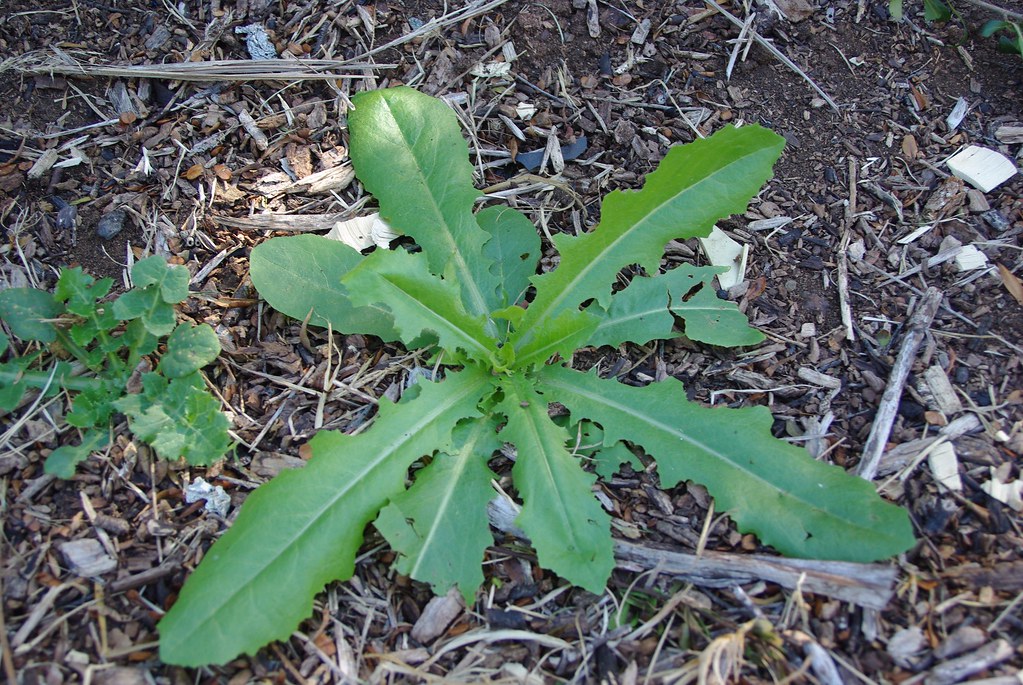Disclaimer: This Materia Medica is provided for informational purposes only and should not replace professional medical advice. Please consult with a qualified healthcare practitioner or herbalist before using any herbal remedies.
Materia Medica: Wild Lettuce (Lactuca virosa)
Introduction: Wild lettuce, scientifically known as Lactuca virosa, is a versatile medicinal herb with a rich history of use in traditional herbal medicine. Often referred to as “opium lettuce” due to its mild sedative properties, wild lettuce has been employed for centuries to address various ailments. As a professional herbalist, I’ll provide an exhaustive Materia Medica on wild lettuce, detailing its botanical characteristics, constituents, therapeutic uses, dosages, and safety considerations.
Botanical Description:
- Botanical Name: Lactuca virosa
- Common Names: Wild lettuce, opium lettuce, bitter lettuce, prickly lettuce
- Family: Asteraceae (Daisy family)
- Habitat: Native to Europe and Asia, now naturalized in North America.
- Plant Type: Biennial or perennial herb with a tall stem, growing up to 6 feet (1.8 meters) in height.
- Leaves: Deeply lobed, lance-shaped, and serrated with a prickly texture. They exude a milky latex when cut.
- Flowers: Yellow, daisy-like flowers arranged in clusters.
- Fruits: Small, ribbed seeds with white, feathery pappus for wind dispersal.
- Harvesting: Leaves and stems are harvested in the flowering stage, typically in late spring to early summer.
Constituents: Wild lettuce contains various phytochemicals, including:
- Lactucin
- Lactucopicrin
- Lactucin-15-oxalate
- Lactucopicrin-15-oxalate
- Lactucin-8-glucoside
- Lactucopicrin-8-glucoside
- Sesquiterpene lactones
- Flavonoids
- Tannins
- Coumarins
- Alkaloids (trace amounts)
Therapeutic Uses:
- Analgesic and Sedative: Wild lettuce is traditionally used for its mild analgesic and sedative properties. It may help alleviate pain, anxiety, and restlessness.
- Sleep Aid: It is used to promote restful sleep, making it valuable for individuals suffering from insomnia or restless sleep patterns.
- Pain Management: Wild lettuce may be used to relieve various types of pain, including headaches, muscle aches, and joint pain.
- Respiratory Health: It has been employed to soothe coughs and ease respiratory discomfort.
- Digestive Aid: In some cases, wild lettuce is used to improve digestion and reduce symptoms of indigestion.
- Anti-Spasmodic: It may help relax muscle spasms, making it useful for conditions like menstrual cramps.
- Mild Hypnotic: Wild lettuce can induce a mild hypnotic effect, helping individuals relax and drift into sleep.
- Migraine Relief: Some individuals use wild lettuce to alleviate the severity of migraines.
Dosages: Wild lettuce can be administered in various forms, including tinctures, teas, capsules, and dried herb. Dosages may vary, but here are some general guidelines:
- Tincture: 2-4 ml (1:5 in 40% alcohol) up to three times daily.
- Tea: Steep 1-2 teaspoons of dried wild lettuce leaves in hot water for 10-15 minutes. Drink up to three times daily.
- Capsules: Follow the manufacturer’s recommendations.
- Smoking: Some individuals have smoked dried wild lettuce leaves, although this method is not recommended due to potential risks.
Safety Considerations:
- Wild lettuce is generally regarded as safe when used in moderation and under the guidance of a qualified herbalist.
- Pregnant and nursing individuals should avoid wild lettuce due to its potential sedative effects.
- Individuals with allergies to plants in the Asteraceae family (such as ragweed) may be more prone to allergic reactions.
- Excessive consumption may lead to nausea, vomiting, or diarrhea.
- Avoid operating heavy machinery or driving after consuming wild lettuce, as it can cause drowsiness.
In conclusion, wild lettuce is a valuable herbal remedy with a long history of use for its sedative, analgesic, and calming properties. However, like all herbs, it should be used responsibly and under the guidance of a trained herbalist or healthcare practitioner. Always consider individual tolerance and potential interactions with other medications before incorporating wild lettuce into your wellness routine.





